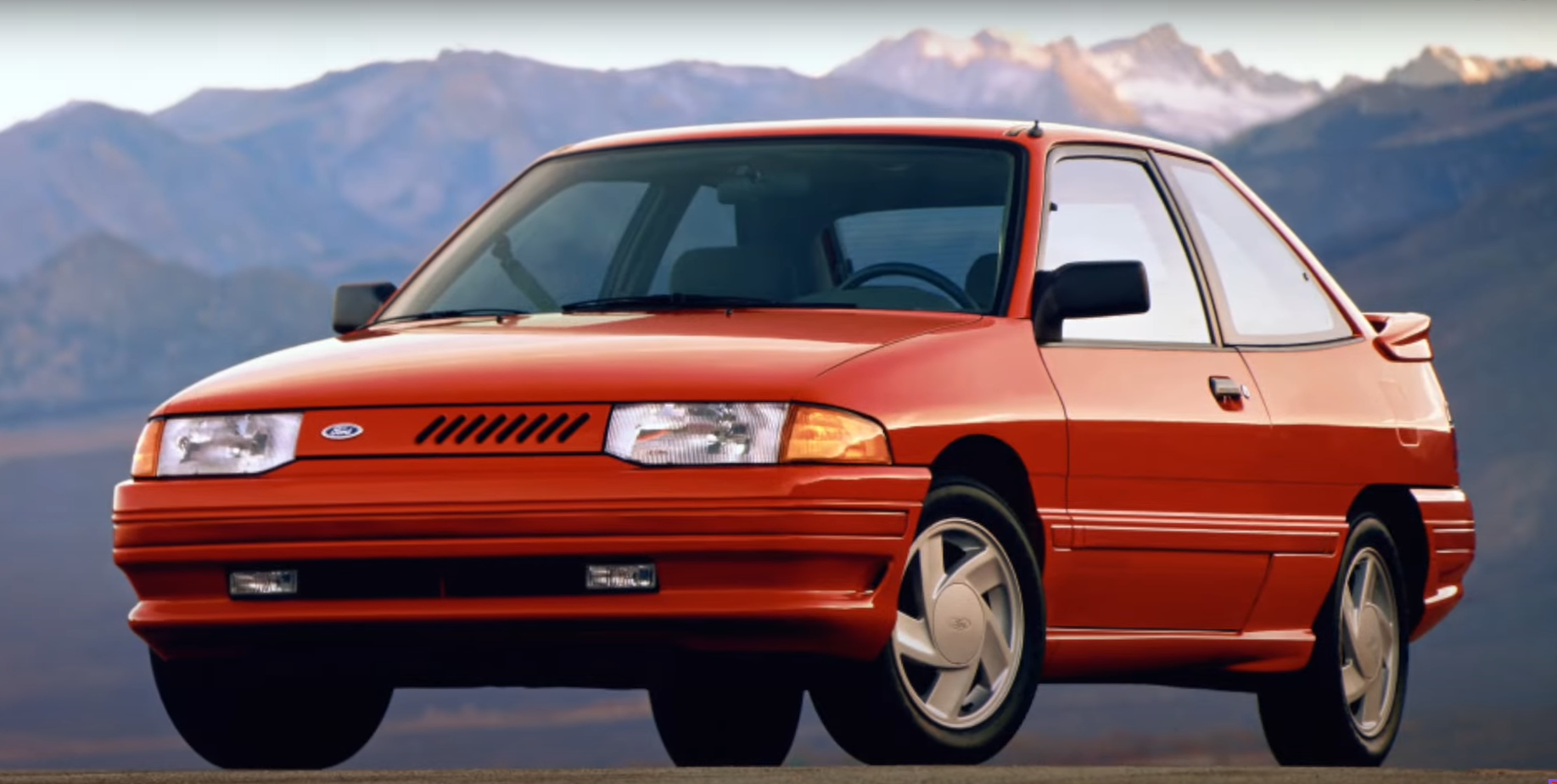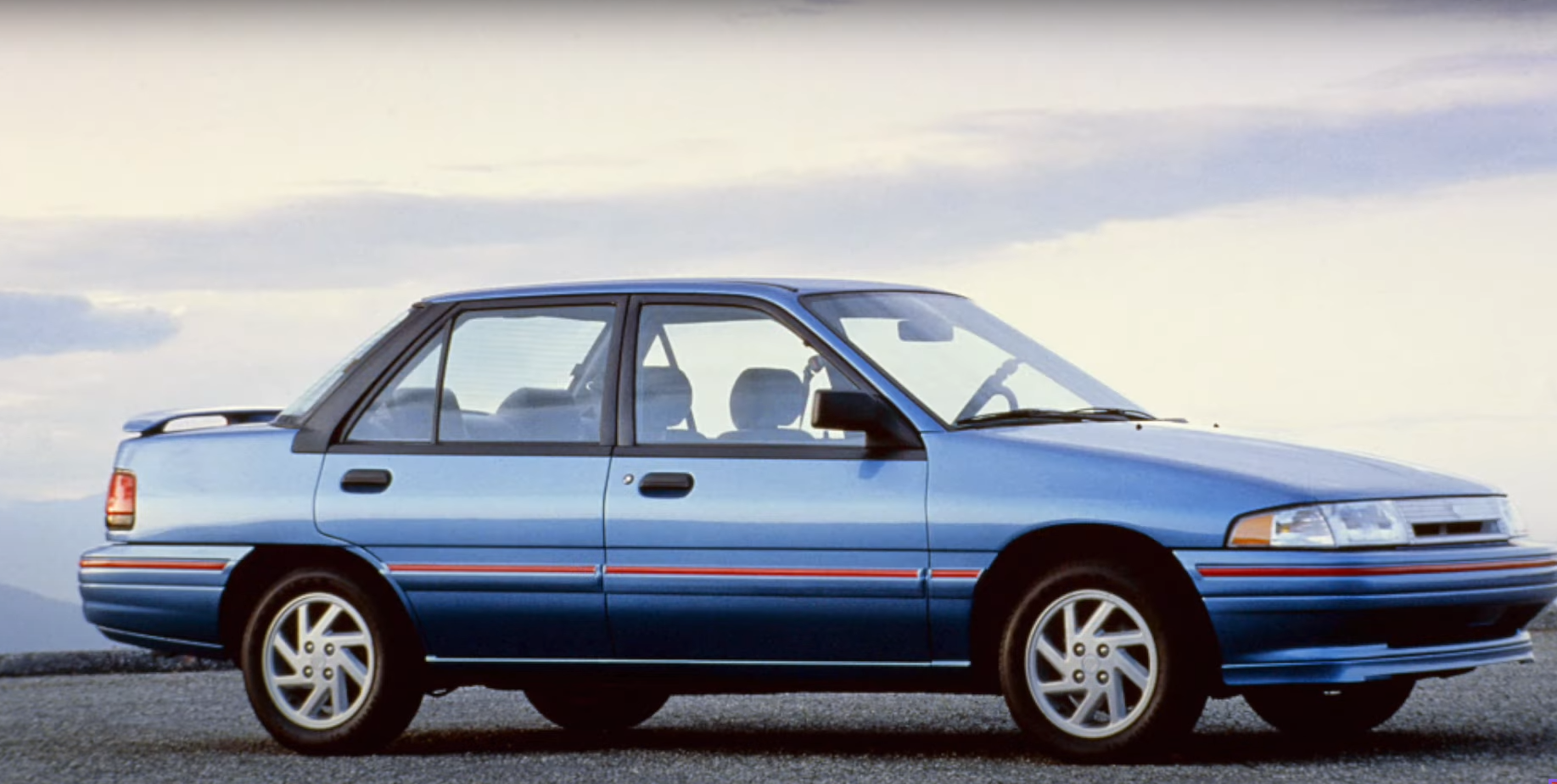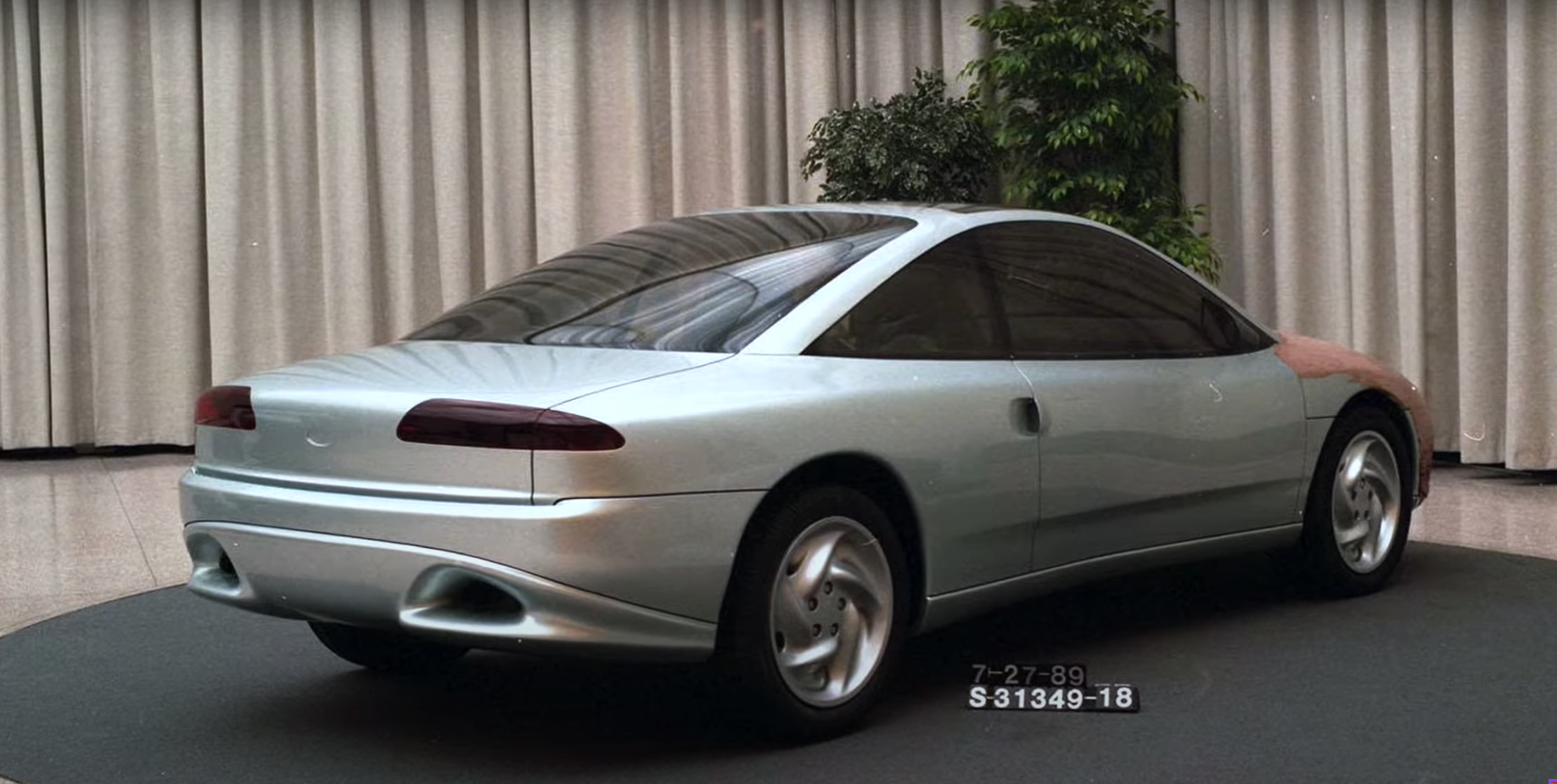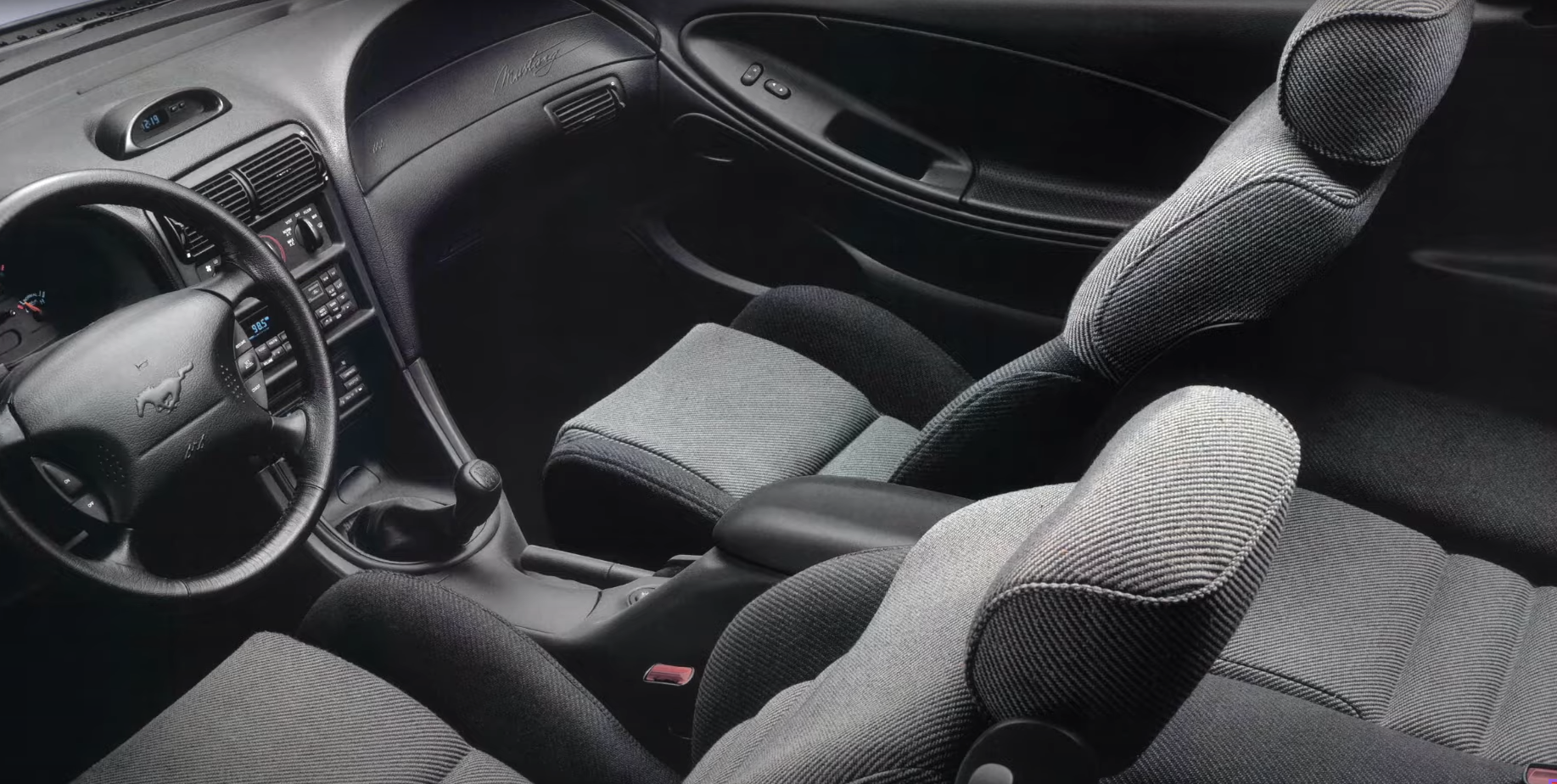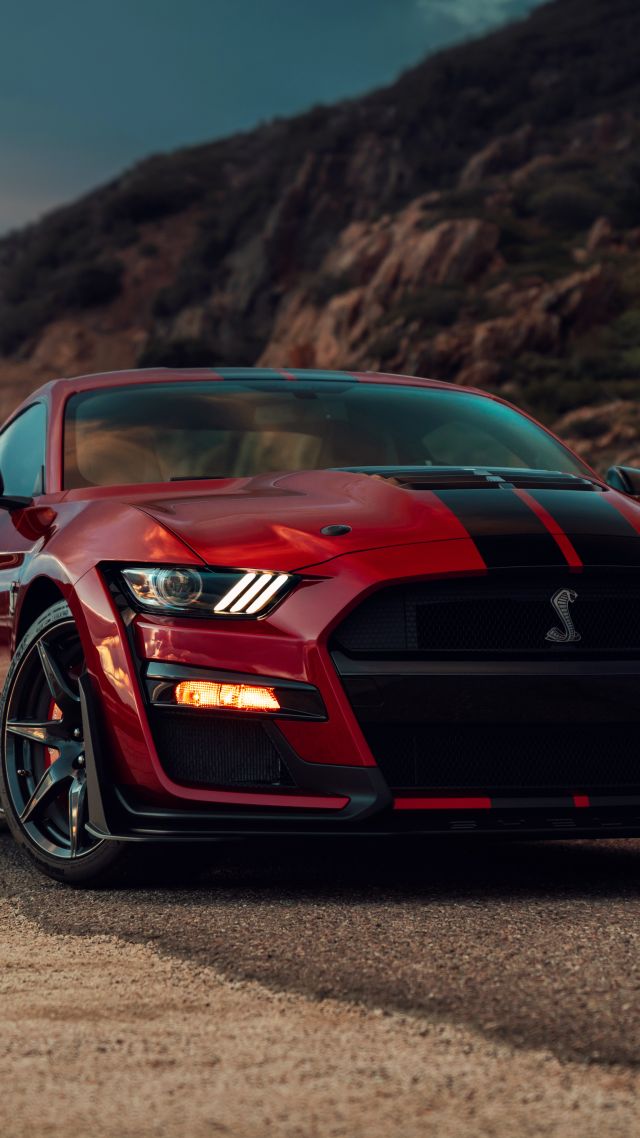The SN95 Ford Mustang marked a notable chapter in the history of American cars. Produced from 1994 to 2004, this generation kept the rear-wheel-drive tradition alive and featured a mix of classic Mustang design with updated styling. Compared to earlier models, the SN95 stood out with its sleeker look, modern touches, and two different body styles: a fastback coupe and a convertible.
Designers made efforts to balance old-school Mustang DNA with features fit for the time. From the dash’s twin cowl shape to the sculpted lines along the car, the SN95 reflected both retro themes and new ideas. Along with a range of engine choices and steady popularity among buyers, this Mustang made a strong impression among both enthusiasts and the wider public.
Key Takeaways
- The SN95 Mustang blended classic styling with modern features.
- Several trims and engines gave buyers a range of options.
- Updated design and comfort helped the SN95 gain market popularity.
Mustang Heritage
How the Name Began
Ford chose the Mustang name after the famous P-51 Mustang fighter plane from World War II. The first public debut happened at the 1964 World’s Fair in New York. The car’s design and style grabbed attention right away, and it became popular quickly.
Fun Fact Table
| Year | Event |
|---|---|
| 1964 | Mustang public debut |
| 1966 | 1+ million units sold |
The Mustang’s Role Through Time
The Mustang made a strong impression from its start, with its bold lines and sporty feel. People liked its mix of fresh looks and familiar details. Its rapid success—over a million units sold in just two years—showed how much people wanted a fun and stylish American car.
The model kept a rear-wheel drive setup, even when Ford considered switching to front-wheel drive in the 1980s. Consumer feedback and market changes helped keep its classic setup and style.
Key Points
- Quick buyer response after launch
- Rear-wheel drive kept after rivals stayed classic
- Used old-school Mustang ideas in new shapes
Changes Since the Fox Body
The “Fox Body” Mustang, built from 1978 to 1993, was the SN95’s direct predecessor. The SN95 was built with a tighter budget and a faster timeline—a big shift from the years before. The design changed to smoother lines, a more slanted windshield, and dropped the hatchback option due to low demand.
Comparison Table
| Feature | Fox Body (1978-1993) | SN95 (1994-2004) |
|---|---|---|
| Body Styles | Coupe, Convertible, Hatchback | Coupe, Convertible |
| Windshield Angle | Less steep | Steeper, sleeker |
| Interior Style | Boxy & square | Rounded & modern |
| Taillights | Horizontal bars | Vertical tri-bar |
For the Mustang’s 35th anniversary, the body got “New Edge” styling, using sharper angles and more aggressive lines. The interior stayed mostly the same, still drawing on classic dashboard shapes with a blend of retro and modern ideas.
How the SN95 Mustang Was Designed and Built
Initial Ideas and Early Mockups
Work on the SN95 Mustang began around 1989. Ford wanted to figure out what buyers wanted, so they listened closely to Mustang owners and brought in feedback from public clinics. Because the budget was tight, only three full-sized mockups were created for top executives to review in 1990. These were nicknamed after famous celebrities based on their style:
| Mockup Nickname | Description | Outcome |
|---|---|---|
| Bruce Jenner | Too smooth and soft | Rejected |
| Rambo | Looked too aggressive | Rejected |
| Arnold Schwarzenegger | Balanced, retro touches | Chosen for production |
The final design kept several classic Mustang features, such as side scoops, the Mustang symbol on the front grille, and a long hood paired with a short rear deck. These details gave the car a modern look with a clear nod to past models.
Keeping Rear-Wheel Drive
There were times in the 1980s when Ford considered switching the Mustang to front-wheel drive. They spent money on developing a front-wheel-drive coupe, but this plan changed. When General Motors decided to stick with rear-wheel drive for the Camaro and Firebird, Ford chose to keep the Mustang’s rear-wheel drive layout. This decision helped connect the new Mustang to its classic roots and kept driving fans happy.
Tackling Budget and Styling Challenges
Designing the SN95 Mustang came with strict limits. The team had just 36 months and a $700 million budget, with $200 million set aside for engineering and design. In comparison, Ford had spent $3 billion on the Taurus a few years earlier. Because of the low budget, the designers looked for ways to get the most out of every dollar.
Changing tastes also meant the team dropped the hatchback style and focused on a sleeker fastback coupe and a convertible. The car received a sharper windshield angle and notable new lines along the side and rear scoops. Later, when the “New Edge” update came in 1999, the body got more crisp lines, sharper angles, and a more modern feel, while still reminding people of older Mustangs.
Appearance and Style
Outside Highlights
The SN95 Mustang carries a classic look with modern touches. Its long hood and short rear deck recall vintage Mustangs. The car added strong details like a steeply sloped windshield and bold character lines along the sides. Rear quarter panel scoops and a Mustang logo up front help set it apart. Both the coupe and convertible versions share these sharp design features. The rounded look continued inside, replacing the old Fox Body’s squared-off shapes.
| Feature | Description |
|---|---|
| Hood | Long and sculpted |
| Deck | Short, classic proportion |
| Side Design | Fraimed character line and rear scoops |
| Windshield | Steeper for a sleeker profile |
| Grille | Mustang logo displayed in front |
Car Shapes and Versions
Buyers could choose from two main body shapes:
- Two-door coupe
- Two-door convertible
The previous hatchback model was dropped due to less demand in the United States. The sharper coupe and open-top convertible remained, offering a mix of style and practicality.
Signature Mustang Details
Retro themes play a big part in the SN95’s design. The classic Mustang DNA includes the long hood/short deck look and the return of side scoops. The three-bar tail lights, character lines, and brand icon in the grille tie the car back to its roots.
Notable cues:
- Vertical tail lights (in later years)
- Front pony badge
- Sculpted body lines
1996 Redesign Changes
For 1996, there were a few noticeable design changes:
- Tail lights: Switched to a more vertical, three-bar layout, nodding to the original 1964 Mustang.
- Grille: New honeycomb pattern.
- Wheels: New alloy options.
- Colors: More choices for paint colors.
Most other styling elements stayed the same between 1996 and 1998.
Major 1999 Style Refresh
The “New Edge” look came out for 1999 and made the car appear more modern and bold. Designers used sharper angles and crisp lines on the exterior.
Updated features included:
- One-piece, clear headlamps
- Centered pony emblem on the grille
- Strong crease running through the doors
- Larger side scoops
- Rear bumper with a sharper profile
- Three-bar tail lights without the body-color border
The New Edge design lasted through 2004, with only minor tweaks until production ended.
Cabin Design and Comfort
Instrument Panel and Controls
The SN95 Mustang’s dashboard uses a twin-cowl design inspired by classic Mustangs. This gives the cabin a sporty look. The dashboard and controls have a rounded, modern feel compared to the blocky look of the previous generation.
Gauges are simple to read, and the climate controls sit above the stereo system for easy access. Buttons and switches are clearly labeled and close to the driver. This setup creates a feeling of being surrounded by the car, helping drivers focus on the road.
Key features:
| Feature | Description |
|---|---|
| Dashboard Design | Rounded twin-cowl, retro-inspired |
| Gauge Visibility | Clear and easy to read |
| Control Placement | Within easy reach for driver and passenger |
Seating and Driver Position
The seats are made to be comfortable for daily driving and trips. Most people will find the seats soft and supportive. The seating position makes it easy to see controls and the road ahead.
However, the seats may not provide as much support as needed for fast cornering or spirited driving. The steering wheel looks stylish and sometimes includes cruise control buttons, adding to the driving comfort.
Quick facts:
- Soft seats for comfort
- Supportive enough for most driving
- Steering wheel has optional controls
Classic Touches and Updated Features
Inside the SN95 Mustang, there is a mix of familiar and new elements. Retro themes appear in the twin-cowl dashboard and the overall shape. At the same time, drivers find up-to-date features like the organized control layout and modern materials.
The interior design balances old and new, letting fans of classic cars enjoy the Mustang’s heritage while getting the perks of a more current car. This careful blend makes the cabin both stylish and functional.
Powertrains and Driving Capabilities
Standard Six-Cylinder Choices
The SN95 Mustang came with a 232 cubic inch V6 engine as its entry-level motor for the 1994–1995 models. This six-cylinder produced 145 horsepower and 215 lb-ft of torque. Compared to the older Fox Body Mustang’s four-cylinder, which only delivered 105 horsepower, this base V6 gave drivers more power for everyday driving.
| Engine Type | Horsepower | Torque (lb-ft) |
|---|---|---|
| 232 ci V6 | 145 | 215 |
| Previous 2.3L I4 | 105 | — |
Performance V8 Models
Moving up to the GT brought the famous 5.0-liter V8 engine, making 215 horsepower and 285 lb-ft of torque in these early SN95 models. This classic small-block V8 offered strong acceleration. For example, a GT coupe with the manual transmission could go from 0 to 60 mph in about 6.8 seconds. Key upgrades included a modern intake manifold, aluminum pistons, and Ford’s electronic engine controls.
- 5.0L V8 Details:
- 215 horsepower
- 285 lb-ft torque
- 0–60 mph in ~6.8 seconds (manual GT coupe)
High-Output Cobra Improvements
The Cobra edition returned for 1994 and 1995 with extra power and performance-focused changes. The Cobra’s engine produced 25 more horsepower than the GT. Ford achieved these gains by improving the cylinder heads, using roller rockers, stronger valve springs, and a redesigned upper intake manifold. These upgrades helped the Cobra engine breathe better for higher performance.
Notable Cobra Features:
- Enhanced cylinder heads
- Upgraded valve springs and rockers
- Improved intake manifold
- Higher peak horsepower compared to the GT
Market Appeal and Popularity
Feedback from Buyers and Media
The fourth-generation Mustang arrived with a fresh look that balanced classic shapes and modern lines. Both car reviewers and the general public responded positively to its design. Features like the long hood, short rear trunk, and retro side scoops were praised for adding to the Mustang’s timeless image. The changes from the previous model, such as the sleeker windshield and the shift away from the hatchback style, were well received. Many buyers enjoyed the blend of nostalgia and updated styling.
Sales and Market Trends
Strong demand followed the launch of this Mustang generation. The market favored the two-door coupe and convertible body styles, while interest in hatchbacks dropped, leading Ford to stop producing that version. Table 1 shows the sales focus:
| Body Style | Popularity Level |
|---|---|
| Coupe | High |
| Convertible | High |
| Hatchback | Low |
The Mustang’s sporty look, improved comfort, and traditional features kept it popular among car shoppers.
Changes by Production Year
The Mustang saw several updates through its production run:
- 1996: The rear lights switched from horizontal bars to a more classic vertical design. Ford also offered new grille styles, wheel options, and paint choices.
- 1999: The “New Edge” redesign gave the Mustang sharper lines and one-piece headlights. At the back, taillights lost their colored border, and the bumper adopted a more angular look.
- 1999–2004: Only minor changes were made after the 1999 update, with few alterations until the end of this model’s run in 2004.
These adjustments helped the Mustang maintain its appeal year after year without straying far from its core style.
Final Thoughts and Smart Shopping Tips
When looking at the SN95 Mustang, consider which body style stands out to you—the 1994–1998 version or the sharper, more angular 1999–2004 New Edge. Both styles offer different design elements, so it often comes down to personal taste.
Key factors to think about:
- Body Style:
- 1994–1998: Classic curves, retro cues
- 1999–2004: Edgier, more aggressive lines
- Engine Choices:
Model Engine Type Horsepower Torque Base V6 232 cu in 145 hp 215 lb-ft GT V8 5.0L 215 hp 285 lb-ft Cobra Upgraded V8 240 hp — - Interior Comfort:
- Modern and sporty dashboard
- Retro touches like the twin cowl design
- Comfortable seats, though not best for intense driving
- Practical Features:
- Controls are well marked
- Good visibility with raked windshield
- Easy-to-read gauges
Choosing an SN95 Mustang means balancing classic looks and modern features. Match the features to your personal needs, whether it’s the stronger engine in a GT or the sleek style of a New Edge model. Always check for model-specific updates and maintenance history before making a final decision.


